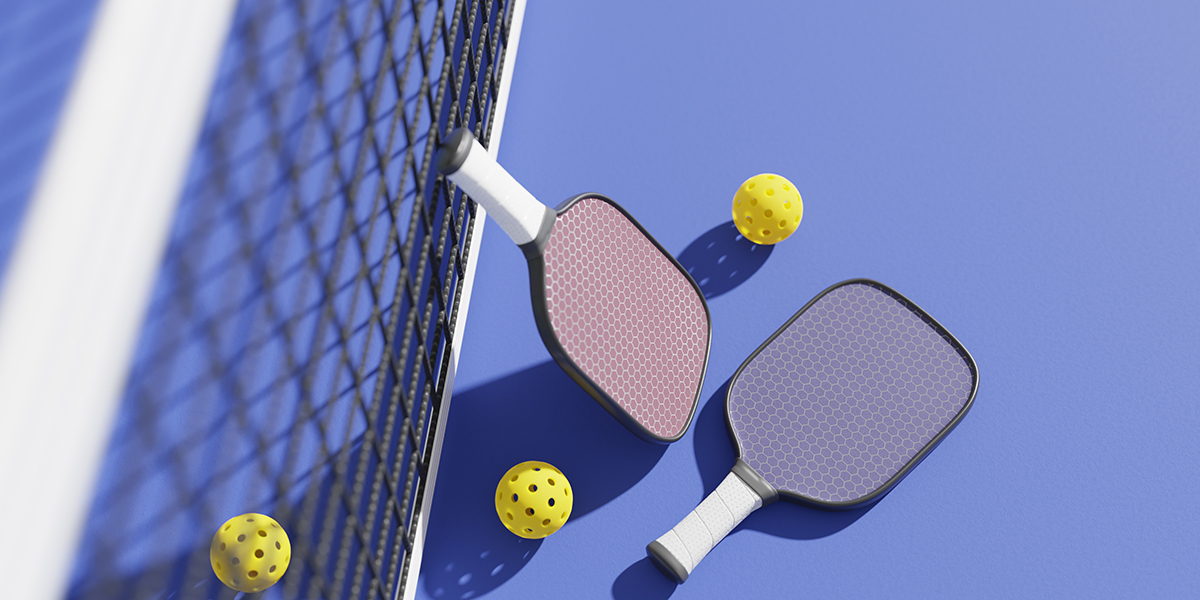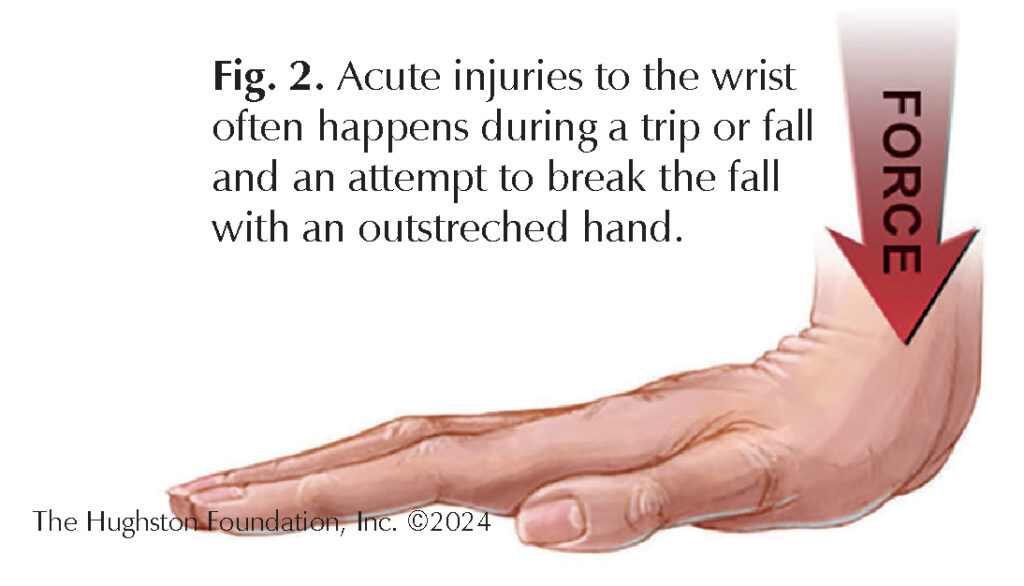Contributing physicians in this story

Pickleball, a combination of ping-pong, badminton, and tennis was created in 1965; however, during recent years it has exploded in popularity. As of 2023, pickleball was the fastest growing sport in America for the third year in a row. Currently, the Association of Pickleball Professionals estimates that 36.5 million individuals play pickleball in the United States alone. Adults from the age of 18 to 34 make up the largest percentage of pickleball players at around 30%; but athletes enjoy the sport across all age groups from the very young to people in their 80’s and 90’s.
With its rise in popularity, there has also been an increase in injuries associated with the sport. Despite pickleball being less physically demanding than tennis and safer than many other sports, approximately 19,000 pickleball injuries occur each year. Traumatic type injuries, such as sprains, strains, and fractures, as well as overuse injuries can occur when people go from being relatively inactive to a significant increase in their activity.
Lower extremity injuries
Knee and hip
 The most prevalent types of lower extremity injuries seen around the knee and hip are sprains and strains. A sprain occurs when you stretch or tear a ligament (fibrous tissue that connects bones). A sprain can be very mild in nature, but it also can be serious, such as a torn anterior cruciate ligament (ACL) in the knee. A muscle strain occurs when you injure a muscle or tendon. This often happens when you stretch a muscle too much and part of it tears. In pickleball, common areas of muscle strains involve the quadriceps muscle in the front of your thigh, the hamstring muscles in the back of your thigh, or the gastrocnemius muscle in your calf (Fig. 1). To avoid injuries around the knee and hip, you should warm up and stretch before activity. Exercising to strengthen your quadriceps and hamstrings, and the muscles around your hip can also help you avoid injury.
The most prevalent types of lower extremity injuries seen around the knee and hip are sprains and strains. A sprain occurs when you stretch or tear a ligament (fibrous tissue that connects bones). A sprain can be very mild in nature, but it also can be serious, such as a torn anterior cruciate ligament (ACL) in the knee. A muscle strain occurs when you injure a muscle or tendon. This often happens when you stretch a muscle too much and part of it tears. In pickleball, common areas of muscle strains involve the quadriceps muscle in the front of your thigh, the hamstring muscles in the back of your thigh, or the gastrocnemius muscle in your calf (Fig. 1). To avoid injuries around the knee and hip, you should warm up and stretch before activity. Exercising to strengthen your quadriceps and hamstrings, and the muscles around your hip can also help you avoid injury.
Ankle injuries
As with the knee, ankle sprains in pickleball vary in their degree of severity. One such injury, an Achilles tendon tear involves the thick band of tissue that connects your calf muscle to your calcaneus (heel) bone. Often the injury occurs in a new player or someone who has been inactive, although seasoned athletes can also rupture their Achilles tendon. The injury occurs when the player takes a quick step on the court and feels or hears a pop, experiences pain in the back of their ankle, and has difficulty walking. A ruptured plantaris tendon, often called tennis leg, can mimic an Achilles tendon rupture. The plantaris tendon runs along the back of the calf. This particular tendon is a vestigial structure, which means that it does not have any apparent purpose. With the plantaris tendon rupture, you also feel or hear a pop, but experience pain in the posterior (back) aspect of the calf. Orthopaedist treat plantaris ruptures nonoperatively and allow athletes to return to play when symptoms abate. As with injury prevention around the knee and hip, you can decrease your risk of injury around the ankle by stretching your calf muscles and hamstrings prior to playing and begin warming up slowly on the court.
Upper extremity injuries
Upper body injuries in pickleball can occur in the hand, wrist, elbow, and shoulder and usually result from a fall or slip on the court (Fig. 2). Acute (sudden or traumatic) wrist injuries are one of the most typical complaints. These occur while tripping or falling and reaching with an outstretched hand to break a fall. Injuries to the wrist can be a relatively minor sprain or more severe in terms of a broken bone that may require surgery.
Pickleball players experience some of the same overuse injuries seen in tennis involving the upper extremity. For example, lateral epicondylitis, often called tennis elbow and now seen in pickleball players results from inflammation of the insertion site of the tendons that extend the wrist and fingers (Fig. 3). Repeated stress on the tendons while playing pickleball cause inflammation, swelling, and sometimes tearing of the tendons. Symptoms usually consist of pain and weakness when grasping objects or trying to lift objects with your palm facing down. Treatment includes rest, ice, activity modification, bracing, injections, and sometimes surgery. 
Prevention
Prevention can play a major role in reducing the risk of injury. Planning and purchasing good equipment as well as preparing your body can help prevent most pickleball injuries. For example, appropriate footwear to include athletic shoes with good traction and ankle support can help avoid slips and falls. Choose a shoe made for the court, such as those designed for tennis, pickleball, basketball, or volleyball sports. These shoes support your foot and ankle during quick pivots and movement on the court. You may also want to consider enlisting your local pickleball pro. Instructional lessons can help you develop and improve your swing, serve, and movement, which will not only help prevent an injury but can also improve your game. Further, exercising regularly with strength training and cardiovascular workouts will help strengthen your muscles and improves your overall condition. Before you step on the court, a thorough warm up and stretching routine can reduce the risk of sprains and strains. Staying hydrated before, during, and after your match helps prevent muscle cramps and benefits your overall health.
Pickleball is an enjoyable activity to play with friends or competitors, and can be a relatively safe sport to play; however, injuries do occur. In the event of an emergency on the court, you should seek immediate medical attention. For most injuries, applying the “R.I.C.E.” treatment protocol is usually a good place to start. Rest, ice, compression, and elevation can help to alleviate the immediate symptoms. If symptoms continue to persist, you should follow-up with your orthopaedist to evaluate your injury and develop an effective treatment plan.
Author: Jake Gudger, MD | Columbus, Georgia
Last edited on July 2, 2024